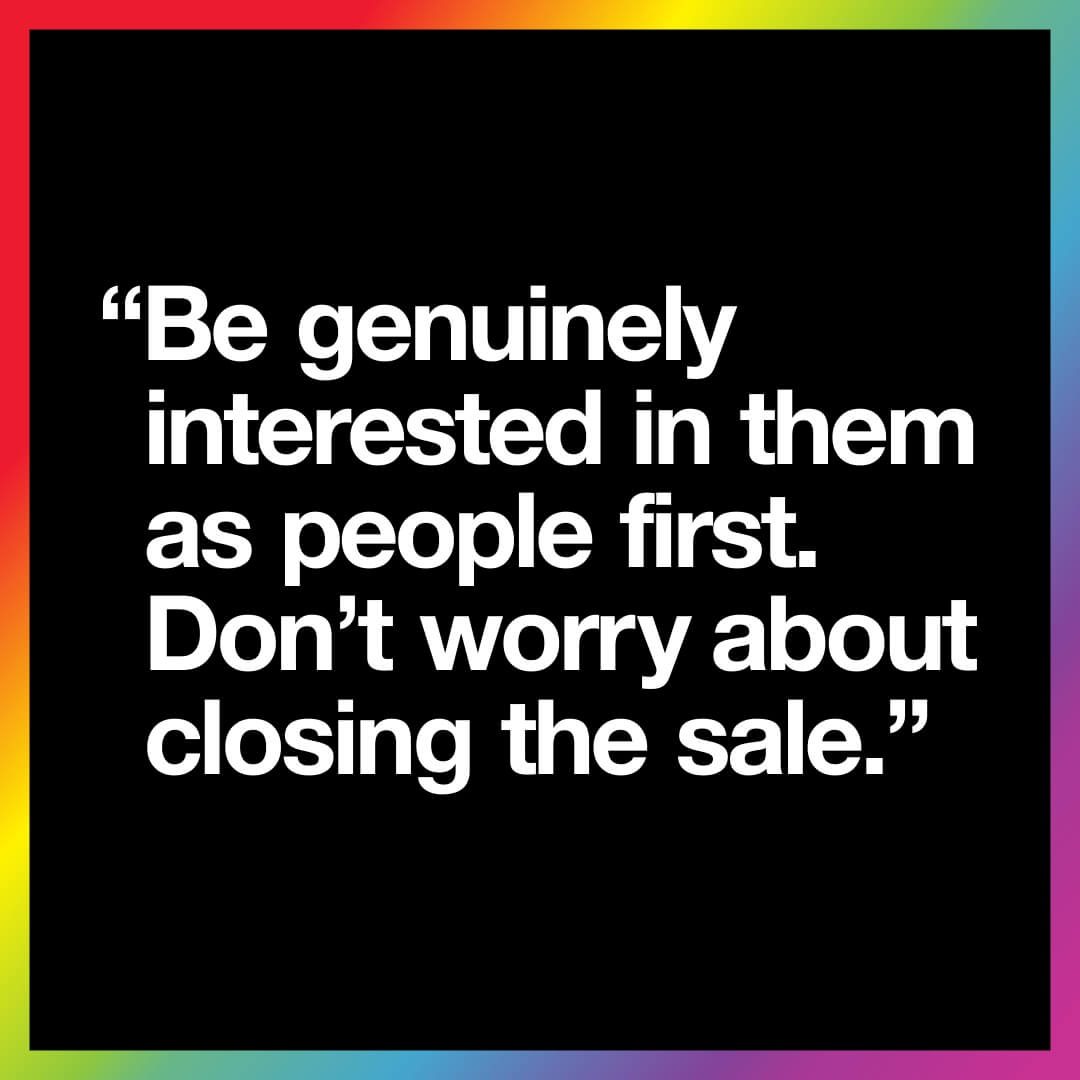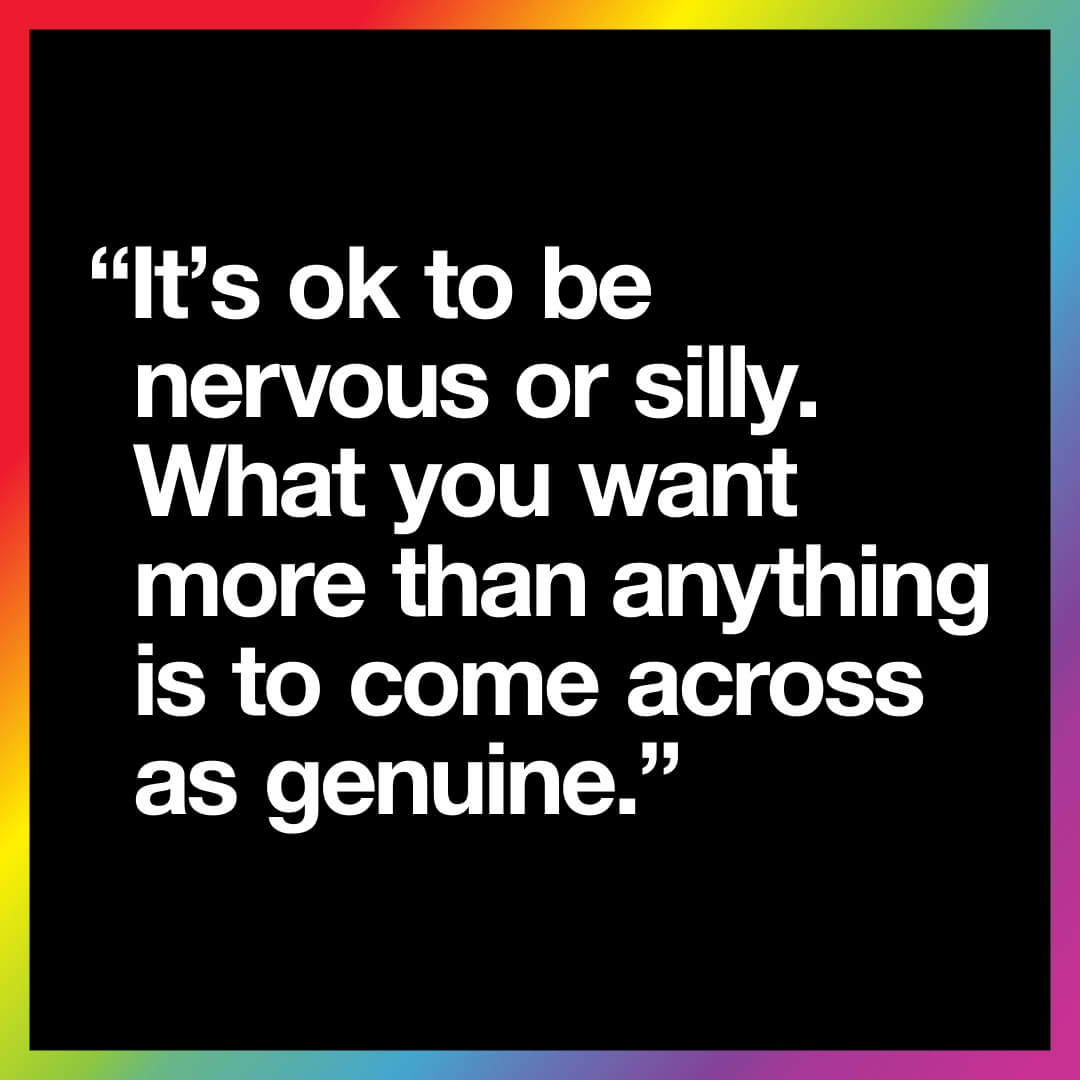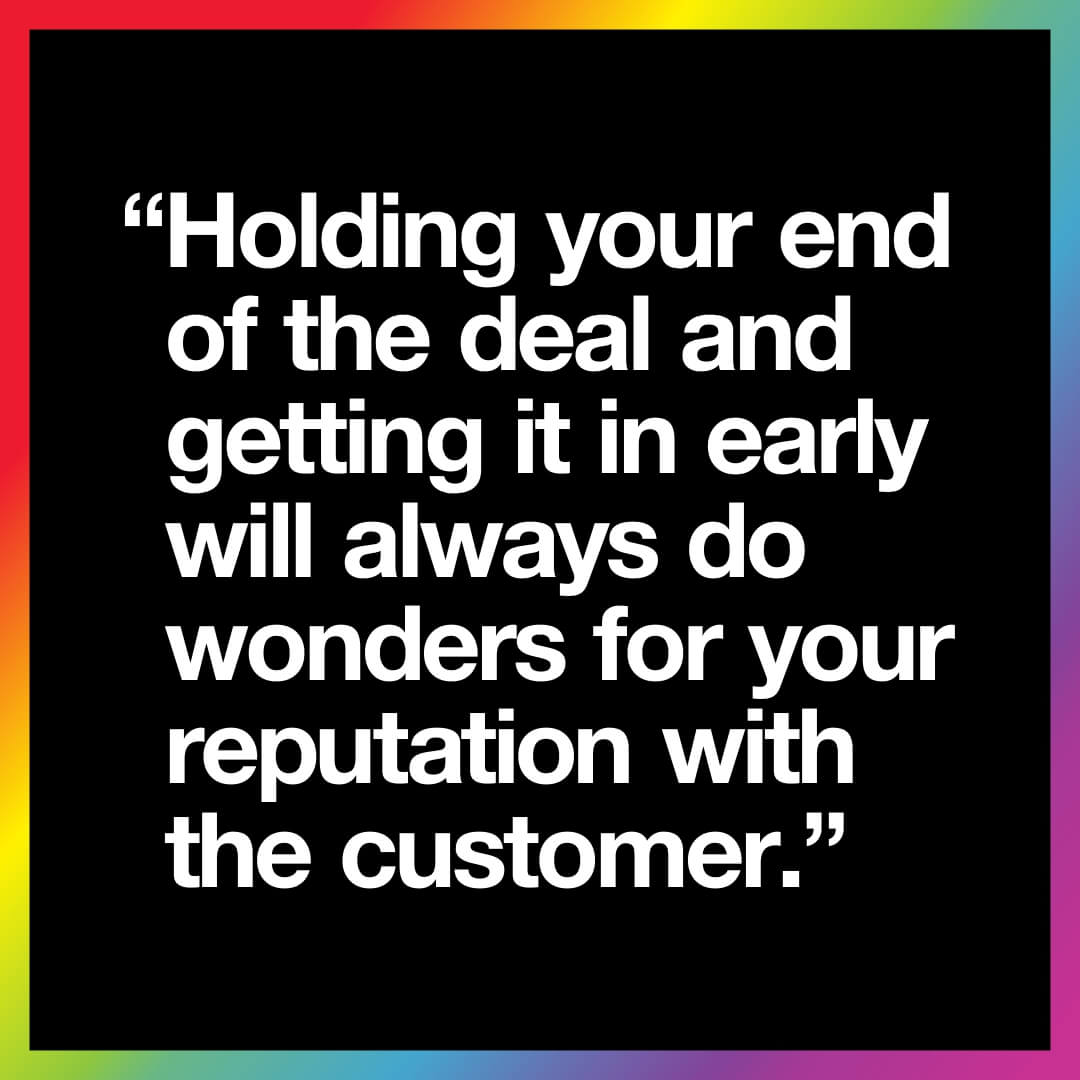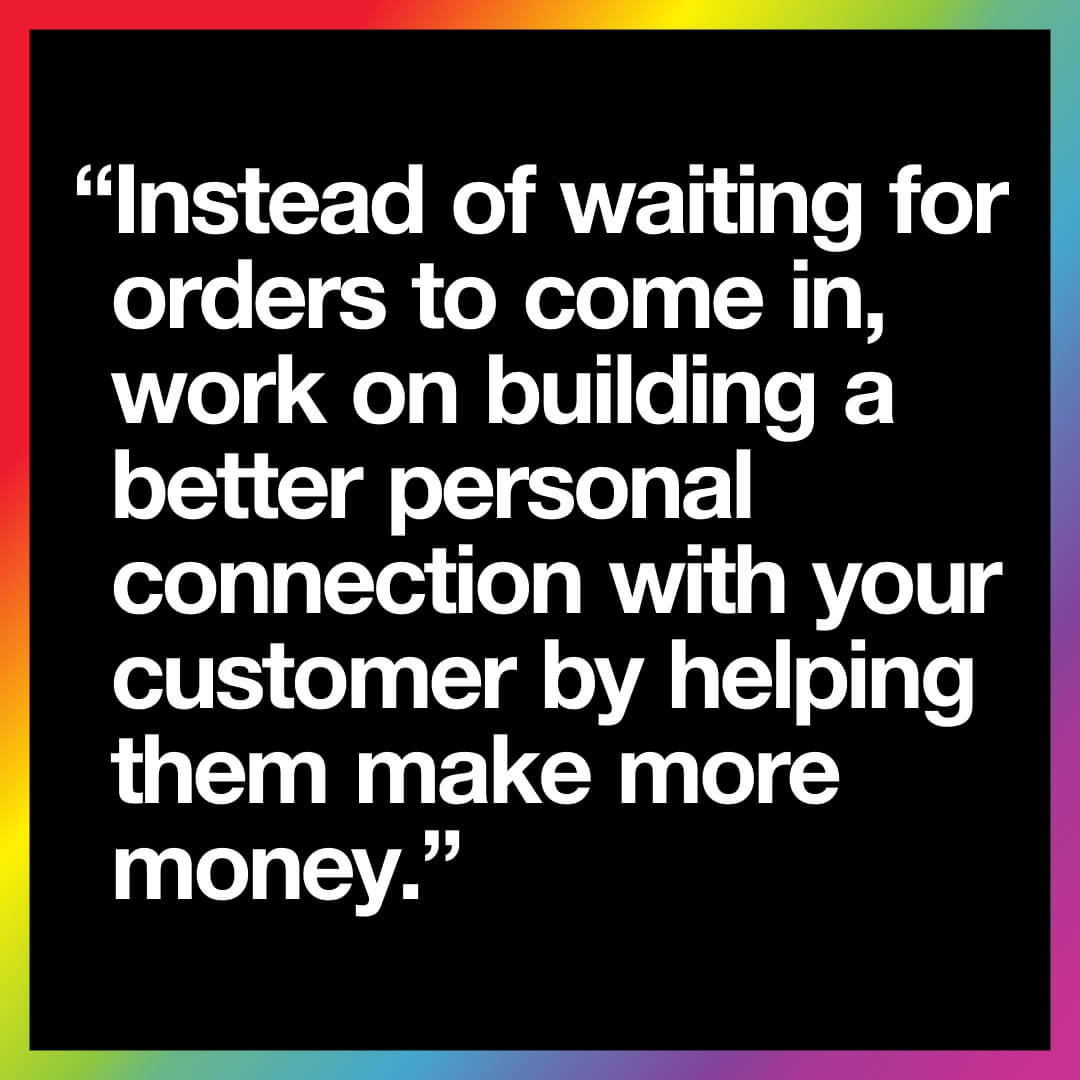Fact: 100% of your customers are people. Also a fact: Everything you do should be 100% about your customer. Therefore, logically speaking, shouldn’t anything you do in your business be about making these people happy? I’d say that the road to that happiness starts with treating customers better and building a personal relationship with them.
After all, not many people do business with their enemies. As people, we like to do business with friends. So how do you work on fostering a deeper personal connection with your customers? Easy
For starters, people want to do business with other people that they know, like, and trust. “Don’t try to sell me something” is an ever-present attitude for most folks. Instead, try to uncover some facts about your potential customer. What do they like? Dislike? Where are they struggling? Ask questions and listen. Let them guide the conversation a little bit.
Be genuinely interested in them as people first. Don’t worry about closing the sale. Can you uncover any common connections with the person? Sports, hobbies, music, food, schools, or backgrounds are always good starting points. Those mutual interests can be vital to developing a deeper bond with your customer. People want you to see them as people. Not as a cash register “Cha-Ching!” Slow it down.

If you can, go see people in person. You can find out a lot about someone by visiting them in their office or where they like to do business. This is a priority because you aren’t just meeting them, but you are also meeting others in the company. But, travel is expensive, and sometimes people are too busy for an in-person chat. If that is the case, try to do a video call. Before the pandemic, people were hesitant about using this method of communication. Now, it is commonplace.
The goal here is to foster a personal connection with your customer by being present in front of them as another person. When everything is email and purchase order-driven, that takes the humanness out of the equation. It pays to show your smiling face.
We always want to make a good impression. I get it. However, some people come across as fake or trying too hard when they project a false facade. Relax. Be yourself. Don’t try to be anyone other than who you are naturally. It’s ok to be nervous or silly. What you want more than anything is to come across as genuine.
Someone asked me the other day for advice.They wanted to know how to determine who makes the purchasing decisions at a big company that they had targeted as a potential customer. They were really worried about it and actually had some anxiety about the situation.
My suggestion was to just call them up and say, “I need your help. I’m trying to find the right person to discuss (what you do). Can you either give me their name or connect me to them?” It worked. Because this person was sincere and honest about what they were trying to accomplish, they were able to not only find the right contact within the company but land the account. It all started with them simply being human and asking for assistance. It is OK to be vulnerable and ask for help.

As people, we’d rather smile than frown. Can you inject humor into the conversation when working with a customer? It literally can be about anything. For some, this is going to be tough. As not everyone is naturally funny or has a sense of humor. But that might be enough if you can get that robot-like demeanor to shift into even a half a smirk. Personally, I like making fun of myself. Someone has to do it, right? It’s a good topic because I’m always present in the conversation. Happy people buy more stuff.
I call this technique “Beat the Clock.” For example, let’s say that you will send your customer a quote or follow up with an answer to a question they asked. Whatever time you stated to them, try to get it in early. If you said 3:00 in the afternoon, try to have it ready just before lunch. By tomorrow means, before you leave today. In the next hour means in about thirty minutes.
Holding your end of the deal and getting it in early will always do wonders for your reputation with the customer. Why? Because so many other companies fail to even return calls. Here’s another tip. Even if you don’t have the complete answer yet. “Hey Fred, just wanted to follow up with you. I’m working on that answer, but I’m waiting on the FedEx manager from Topeka to call me back. He hasn’t yet, but I’m on top of it.”
This is important because without hearing from you, people will fill in their own answers in their heads about the situation. “Well, I guess they don’t care about me. They haven’t called me back.” Or, the time-tested favorite, “They didn’t respond. That means they don’t want my business.” Your goal is to make every other person and company they deal with pale compared to how you operate. Personal connections and credibility are solidified every time you follow up early about something. Consistency is the key.

We have a vast array of ways to communicate with our customers these days. Email, text, phone, in-person, instant messaging apps like Slack, and even good old-fashioned snail mail. Do you know your customer’s preference? As not everyone's the same, you can’t treat how to communicate with them equally. While some people like emails (that’s me!), others prefer phone calls or text messaging.
The omnichannel approach allows you to meet your customer with how they like to do business. Remember, it isn’t about you or your company and how you want to do it. Communication is all about your customer and what makes them the happiest. So, can you send an art approval by text? Can you embed a video in an email?
What you want to build more than anything is a platform to reach your customers with the preferred method. To find out, simply ask them. If you have a CRM tool, this information gets logged in, and the preference flows from there. Finding out how they would like to be contacted is as easy as asking them.
While your competition is focused on being order-takers, you might consider working on innovation. Let’s name this task “Think Create Prepare Surprise,” or TCPS for short. Here, you develop new ideas specifically for your customer before they ask. For example, when I was an art director, we would iterate dozens of designs for customers and present them to the customer. In the bunch, a few were chosen, and we would be producing those designs as reorders throughout the year. Millions of shirts were sold. Did it cost money, time, and effort? You bet.
Instead of waiting for orders to come in, work on building a better personal connection with your customer by helping them make more money. In my example, those key customers didn’t ask for the designs. Instead, we dreamed them up, created the samples, and surprised them with a presentation. I know from personal experience how valuable a TCPS program can be. If I’m helping my customer make more money, don’t you think that will solidify that relationship? The effort and cost are nothing compared to customers that don’t view you as a commodity.

Lastly, and probably most importantly, ask this question. “What do my customers want?” If you want to be more valuable to your customers and foster a deeper connection with them, you have to see things through their eyes. Ask questions about the purpose of the project. For example, let’s say that you are talking to a potential customer from a local school. They contacted you for a quote. Sure, you can get the quantities and work up the numbers. No problemo. But what if you asked more questions?
What if you found out that the primary purpose behind the shirt order was to be a fundraiser for a capital improvement project for the school? By digging into their intent behind the project, you have unlocked the opportunity to discuss how you can build them a print-on-demand online fundraising store. Now, in a short period, you are producing apparel for that fundraising program and the football team, marching band, and even the debate team. By working on deepening the connection between your customer and your capabilities, you have increased the opportunity for more sales by strengthening your personal relationship.